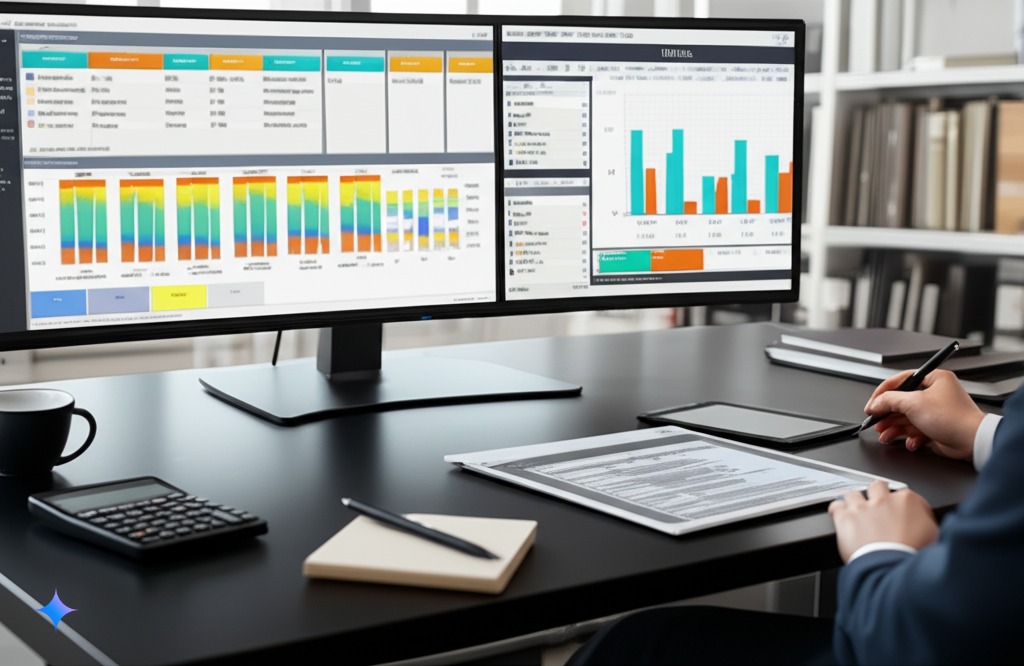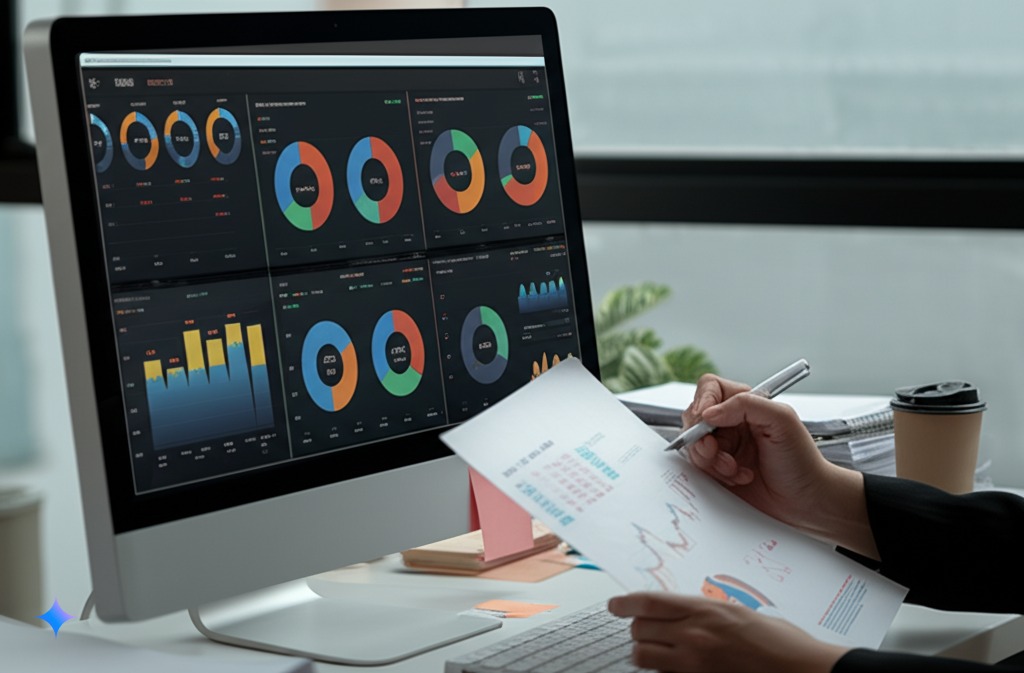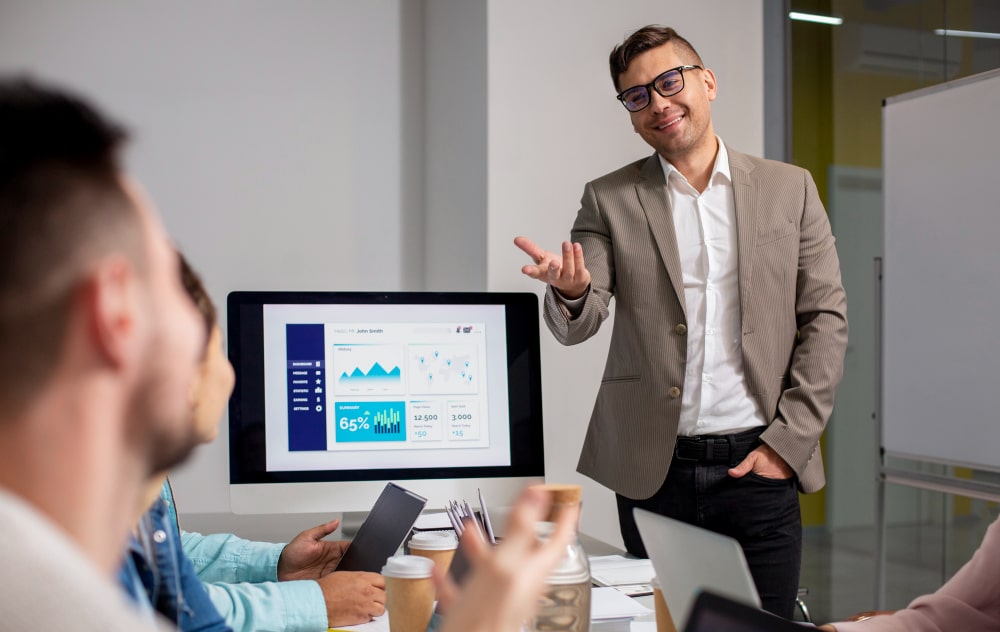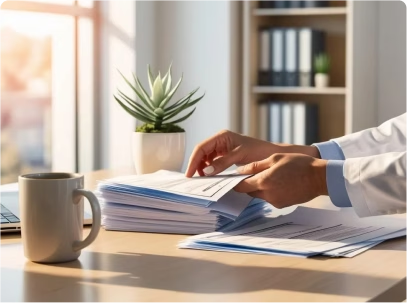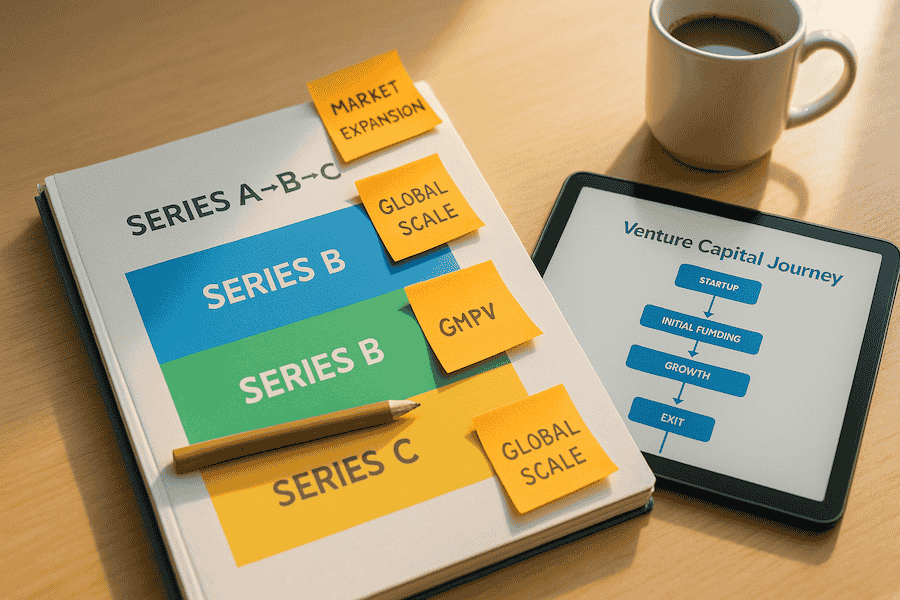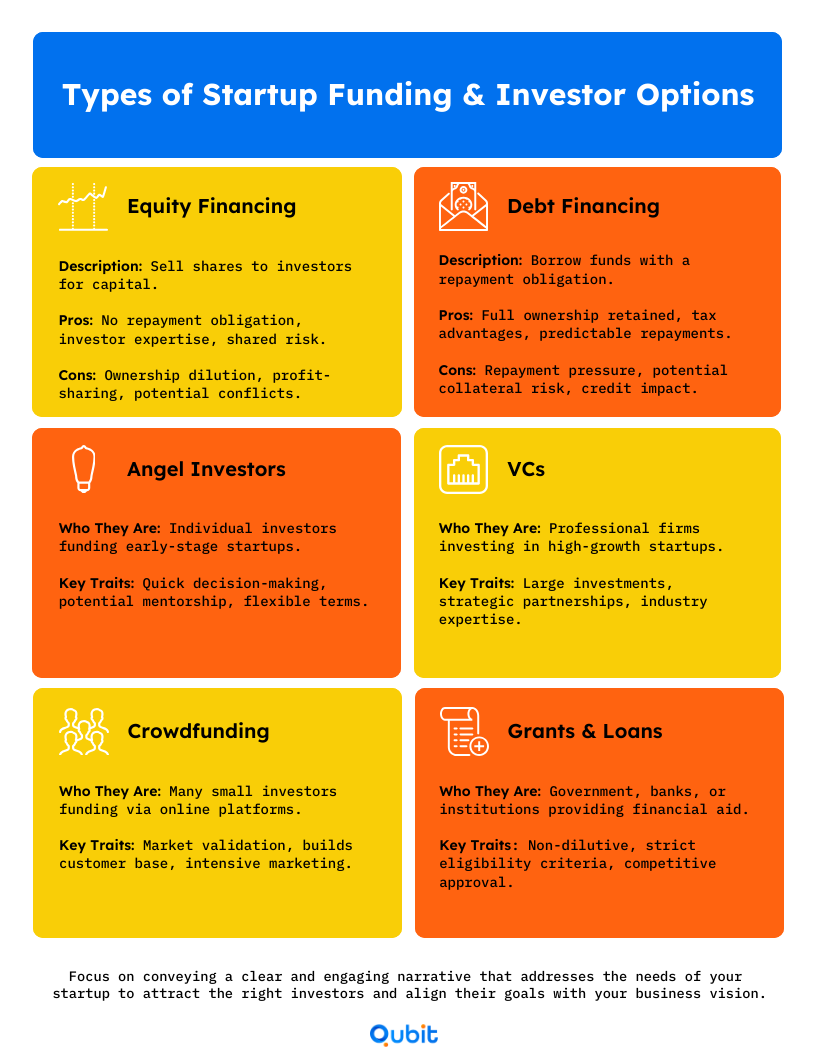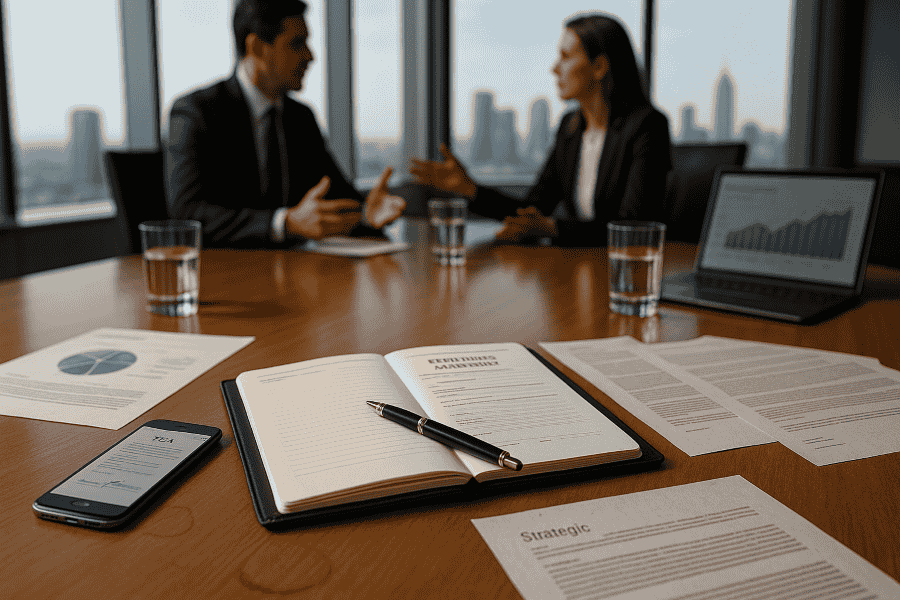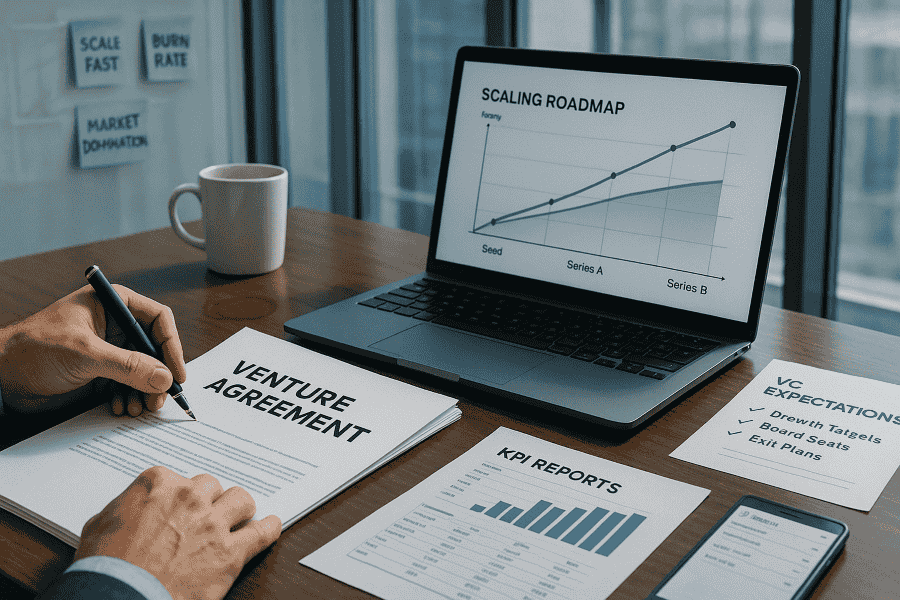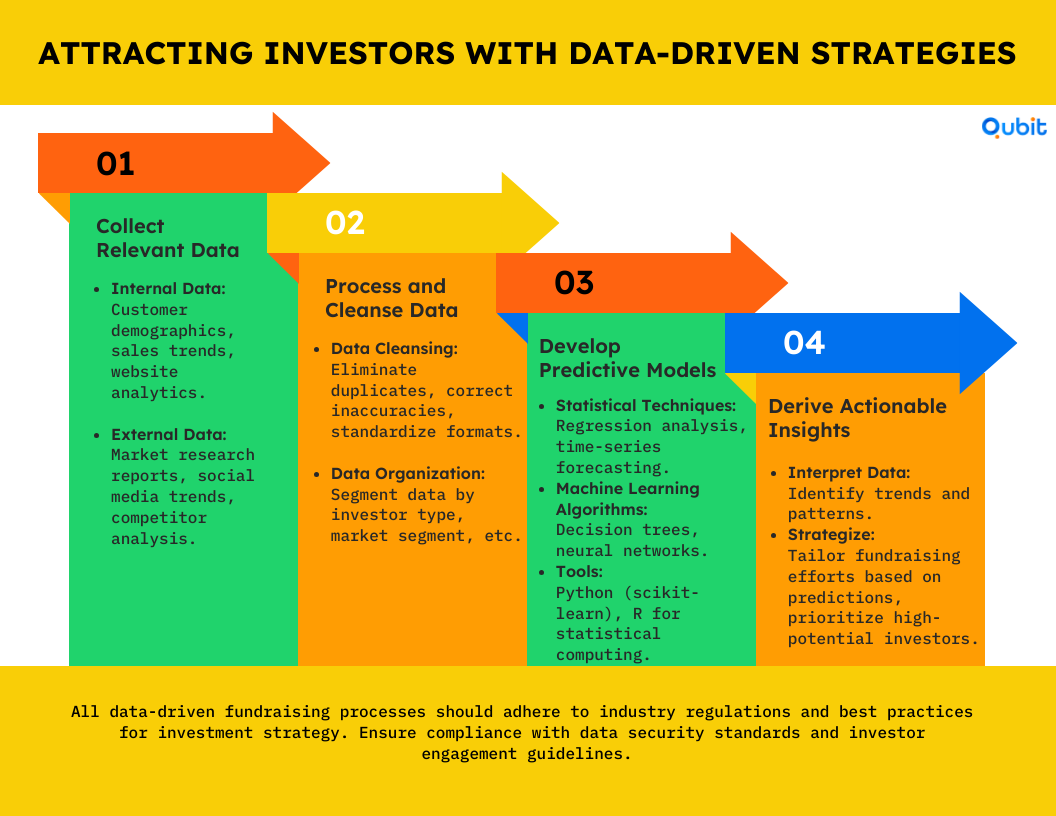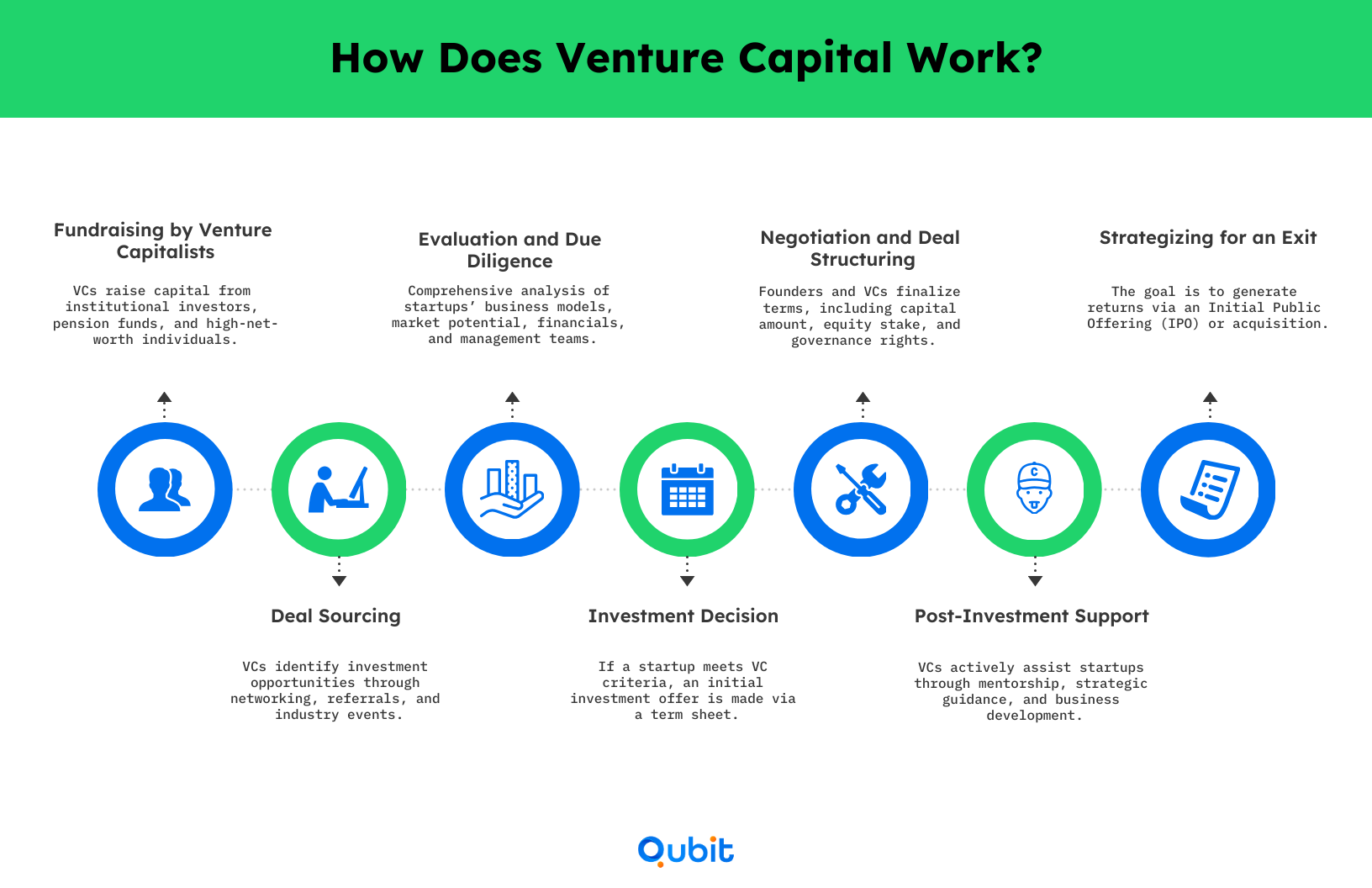The success of a pitch presentation often hinges on more than just the idea itself—it’s about how effectively the message is delivered. Investors are looking for clarity, confidence, and a compelling narrative that demonstrates your business’s potential. Whether you’re presenting to seasoned venture capitalists or first-time angel investors, mastering the art of pitching can set you apart from the competition.
A well-rounded pitch starts with understanding how to create a pitch deck that effectively conveys your business strategy and vision. This guide will equip you with actionable pitch tips, help you avoid common pitfalls, and explain the business pitch meaning in practical terms.
Let’s explore how to turn your next investor presentation into a powerful tool for securing funding.
Tips to Impress Investors
Tip 1: Craft an Engaging Hook to Captivate Investors
Securing investor interest within the first 30 seconds of a presentation for investors can make or break your pitch. You can ace your game with these public speaking tips for startup founders.
Dry, generic openings often fall flat, leaving potential supporters disengaged. Instead, begin with a compelling hook that grabs attention immediately. For example, a surprising statistic can set the stage effectively: “In the UK alone, 10 million tonnes of food go to waste every year, and our technology is reducing that number by 25%.” Such data highlights a real, impactful problem while positioning your solution as essential.
Alternatively, a brief story illustrating a relatable challenge can foster an emotional connection. Perhaps share how a lack of resources stalled progress for a small business, and how your innovation turned their trajectory around. These approaches not only establish relevance but build a narrative that resonates.
Tip 2: Define the Problem and Present Your Innovative Solution
Every successful pitch begins with a clear articulation of the problem your product solves. Without addressing the customer pain point upfront, audiences may struggle to connect with the solution you’re offering. For instance, high street retailers face increasing financial strain due to rising operational costs. According to recent data, a SaaS platform designed for predictive stock management can reduce costs by 15%. Highlighting a clear cost reduction stat helps underline the value of the solution, allowing potential customers to understand its impact immediately.
Educating your audience about the problem builds trust and credibility. Instead of diving straight into product details, take time to explain the broader issue and its implications on the customer’s business. Concrete examples backed by data help establish a stronger narrative. By addressing rising expenses, inefficiencies, or other challenges, your solution becomes more relatable and impactful. For additional insight into how effective communication enhances your pitch, explore our.
Tip 3: Clarify Your Growth Strategy for Investor Confidence
Highlighting a company’s growth strategy is crucial for establishing investor trust. Begin by addressing key growth questions such as the market size you aim to capture, strategic partnerships you’ve secured, and diversified revenue streams. These elements provide investors with a clear understanding of your business pitch meaning and its scalability.
Articulating long-term potential is equally vital. Whether your focus lies in expanding into untapped markets or deepening customer acquisition strategies, ensure your pitch presentation demonstrates realistic yet ambitious growth trajectories. Investors are drawn to businesses that align their current performance with future scalability.
Understanding how to handle investor questions ensures that your responses demonstrate confidence and align with your business goals. For detailed guidance on this, learn more about how to handle investor questions.
By presenting a clear growth narrative, you enhance investor confidence and position your company as a stable, promising investment opportunity.
Tip 4: Showcase Early Traction and Validate Your Business Model
Demonstrating early traction is a powerful way to prove your business model works. Investors often look for concrete evidence that validates the potential of your idea. Using quantitative metrics such as customer growth, sales increases, or strategic partnerships is key to instilling confidence in your vision.
For instance, restructuring the sales force resulted in a 30% sales increase per month. Additionally, signing 50 paying customers—including a major supermarket chain—further solidified the model’s viability. Such metrics emphasize measurable success and highlight your ability to execute effectively. To better understand how to set and track these key performance metrics, review KPI info, which provides a comprehensive guide.
Clear KPIs paired with visual aids, such as graphs or charts, can elevate your pitch by providing straightforward, data-backed validation. Preparation is essential, and knowing how to rehearse a pitch presentation can significantly improve delivery, ensuring your traction story resonates with investors.
Tip 5: Maintain Simplicity and Structure in Your Pitch
An impactful pitch respects both time and clarity. Aim to keep your presentation concise, ideally lasting between 5 to 7 minutes. This approach ensures that your audience remains engaged while you communicate the structure of a pitch deck effectively.
Organize your pitch around essential components such as the problem, solution, market opportunity, business model, and traction. Each section should flow logically, allowing your audience to follow your narrative with ease. Avoid overwhelming investors with excessive details, particularly when it comes to financial projections or technical minutiae. Instead, focus on delivering only the most relevant and compelling data to support your case.
For online presentations, adapting to virtual formats with tips for virtual pitch presentations ensures your delivery remains engaging and professional, even online. Maintaining simplicity, whether in person or virtually, not only highlights your key points but also demonstrates your ability to communicate complex ideas with clarity and precision.
Tip 6: Master Your Financial Metrics and Projections
A well-crafted presentation for investors often hinges on the strength of your financial metrics. Be ready to dive into key figures, such as revenue projections, gross margins, and customer acquisition costs. These numbers highlight the profitability and scalability of your business model, building confidence among potential investors.
For instance, robust financial statistics can instill considerable investor confidence. An average customer spends £1,200 annually, with a gross margin of 70%, and a customer acquisition cost of £200. This results in a payback period of just two months—a clear indicator of efficiency and profitability.
Solid financial knowledge is essential, even if every detail isn’t shared upfront. By using specific figures, you can illustrate your business’s growth potential and long-term viability. To complement your financial insights, you must also learn how to write a value proposition for pitch decks, ensuring your business stands out to potential investors.
Confidence in your metrics paves the way for meaningful dialogue and lasting partnerships.
Tip 7: Highlight Your Team’s Expertise to Impress Investors
Investors often focus on the people driving a business as much as the business itself. Highlighting your team’s expertise establishes credibility and reassures investors that your strategy is in capable hands. Introduce key team members and emphasize their impressive track records to demonstrate their ability to execute your vision effectively.
For instance, showcasing achievements like a COO scaling a startup from zero to £50 million in revenue within three years illustrates exactly why your team stands out. These kinds of accomplishments build trust and differentiate your pitch from competitors. Including impressive team achievements can boost investor trust, making your proposal more compelling.
To further refine your pitch techniques, take inspiration from the best startup pitch deck examples. Understanding successful strategies for investor presentations can complement your narrative effectively.
Highlighting your team’s collective achievements not only strengthens your pitch but also positions your business as a strong contender in the eyes of potential investors.
Tip 8: Quantify the Market Opportunity with Reliable Stats
A compelling pitch presentation begins with evidence of market potential. The UK cybersecurity sector exemplifies this, with its valuation at £8.3 billion and an annual growth rate of 10%. These numbers not only highlight the scale but demonstrate the consistent demand for innovative solutions targeting underserved niches.
Strong market statistics help underline the potential scale of your business. By showcasing credible figures like these, you can instill confidence in investors and stakeholders, emphasizing the lucrative opportunities ahead. This data-driven approach ensures your pitch meaning business and reinforces your commitment to addressing market gaps effectively.
Presenting reliable stats is crucial in a presentation for investors. Use authentic resources to substantiate claims, allowing your audience to envision the scope of your solution within a growing industry. When the data aligns with your vision, it creates a compelling narrative that resonates with decision-makers.
Tip 9: Engage Investors with a Compelling Story
Delivering a pitch presentation that captivates investors starts with weaving a narrative rather than relying on a static list of facts. By crafting a story, you can guide investors through a journey that begins with identifying a pressing problem and concludes with showcasing a verified solution. This approach transforms your pitch into something relatable and memorable.
A well-developed narrative not only highlights the solution’s potential but also integrates measurable results to demonstrate impact. For instance, describing how a logistics platform led to 20% cost savings for businesses adds a tangible layer of credibility to your pitch. Incorporating a cost-saving metric into your narrative can powerfully illustrate the impact of your solution, solidifying its value for investors.
When learning how to pitch investors, focus on connection rather than persuasion. By combining storytelling with concrete metrics, your presentation becomes not just informative but inspiring, making it easier for investors to envision the path forward.
Tip 10: Conclude with a Clear Investment Ask
Clearly defining your financial ask can make all the difference in a successful investor pitch. To instill confidence and decisiveness, explicitly state the investment amount you require and outline how these funds will be allocated. For instance, a pitch might call for £5,000,000 to expand operations, aiming to add 1,000 corporate customers within 18 months—a clear example of a measurable and strategic plan.
By presenting a specific number and deployment strategy, you demonstrate clarity in your business objectives and an understanding of the scale of investment needed. Investors value precision, and articulating how the funds will drive tangible outcomes—such as increased market share or enhanced profitability—provides reassurance.
End your presentation for investors with a concise summary of the expected business impact and return on investment. A definitive ask shows that your pitch deck has a sound structure, leaving no ambiguity about your goals.
Refine Your Pitch Delivery Through Practice
Delivering a pitch effectively starts with the groundwork of consistent practice. When you rehearse your pitch thoroughly, it evolves into a natural, confident presentation that resonates with your audience. Even rehearse your gestures with these body language tips for presentations.
To ensure your pitch resonates with the right investors, consider leveraging our Startup matchmaking service. We connects startups with investors whose interests align with their business models, enhancing the effectiveness of your pitch and increasing the likelihood of securing funding
This refinement process not only enhances your delivery but also helps you anticipate and address potential questions or concerns.
1. Role-Playing for Realistic Scenarios
Simulating investor meetings through role-playing can be transformative. It allows you to test your pitch techniques in a controlled environment while building familiarity with potential challenges. Whether you’re practicing with peers or mentors, these scenarios help sharpen your responses and improve your confidence.
2. Constructive Feedback Is Key
Feedback from seasoned mentors or trusted colleagues can provide invaluable insights. Focus on areas where your pitch can be improved, whether it’s clarifying your value proposition or refining your tone. Incorporating this feedback into your practice ensures your pitch aligns with investor expectations and avoids common pitfalls.
3. Reduce Anxiety with Rehearsal
Repeated rehearsal minimizes pre-presentation jitters and improves the quality of your delivery. As the pitch becomes second nature, your voice, gestures, and flow will feel more genuine and engaging, making it easier to connect with your audience.
Consistent refinement through practice is crucial for delivering a pitch that stands out.
Anticipate and Answer Investor Questions
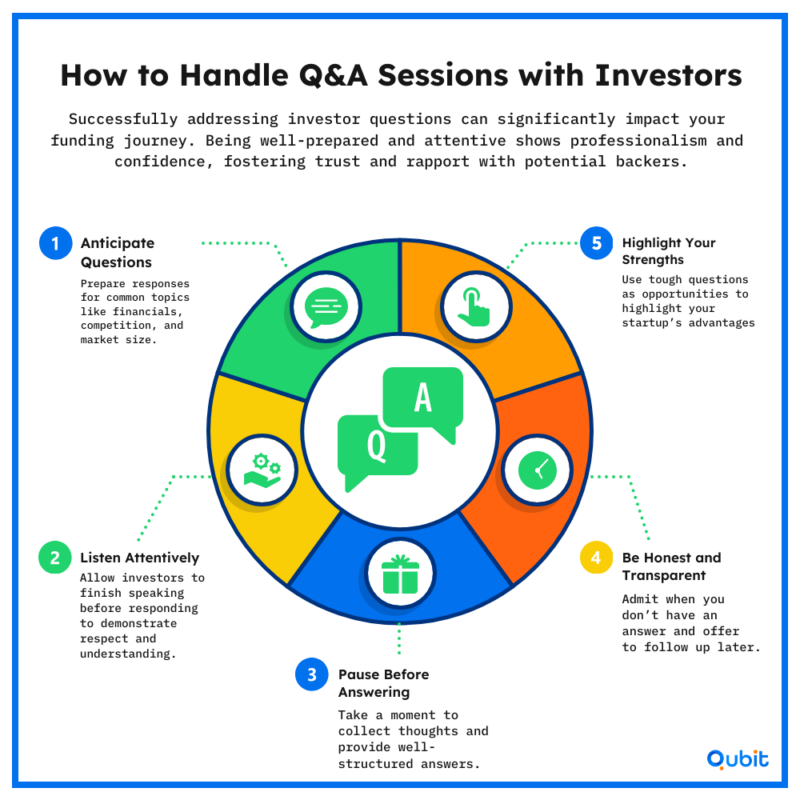
Whether you’re presenting for investors or preparing for high-stakes conversations, anticipating their questions can strengthen your pitch. Most investors will focus on three key areas: competitive advantage, scalability, and risk. Understanding these focal points and preparing well-reasoned responses can significantly enhance your credibility.
To address competitive advantage, highlight what sets your business apart. Be specific—mention unique features, proprietary technology, or market differentiation. For scalability, articulate how your business can grow efficiently. Include plans for resource optimization, market expansion, and increasing revenue streams. Addressing risk effectively involves acknowledging potential challenges while detailing your mitigation strategies, such as contingency plans or diversification.
Practice is essential. Role-play potential Q&A scenarios with a pitch coach or mentor to refine your answers and boost confidence. This preparation ensures you’re not caught off guard and positions you as a knowledgeable and trustworthy leader.
Mastering how to pitch investors isn’t just about presenting facts; it’s about exuding confidence and clarity in every response.
Boost Your Confidence to Deliver a Winning Pitch
Confidence can transform a standard pitch presentation into a compelling story that leaves a lasting impression. Building this confidence starts with intentional preparation. Mental and physical readiness are vital; take time to rehearse thoroughly, visualize success, and ensure you’re comfortable with your material. This groundwork will help you exude assurance while delivering your pitch.
Working with a mentor or coach can provide invaluable support. A skilled advisor can identify areas for improvement, refine your delivery, and bolster your confidence. Even a single session focused on targeted feedback often makes a significant difference, helping you fine-tune your presentation to reflect both your expertise and enthusiasm.
Equally, mental preparation cannot be overlooked. Techniques like mindfulness and positive visualization can reduce anxiety and sharpen your focus. When you combine coaching, feedback, and mental readiness, your pitch meaning business becomes clear—empowering you to present with authority and build trust with your audience.
Avoid Pitfalls in Your Investor Pitch
Crafting an effective pitch presentation is a delicate balance between showcasing your vision and maintaining credibility. Yet, many entrepreneurs fall into common traps that can jeopardize their chances of securing funding.
1. Avoiding a Boring Pitch Deck
A visually dull or disorganized pitch deck can lose investor interest immediately. Your slides should be clear, engaging, and complement your spoken narrative. Use visuals and concise text to support your key points without overwhelming your audience.
2. Steering Clear of Over-Promising
Over-promising, especially when paired with unrealistic projections, can backfire. Investors value transparency and realistic goals over wild claims. Ensure your projections are backed by solid data and demonstrate a thorough understanding of your market.
3. Acknowledging Competitors
Ignoring or dismissing competitors can signal a lack of market awareness. Instead, acknowledge competitors and highlight your differentiators. This approach shows you’ve done your homework and understand the competitive landscape.
4. Providing Financial Clarity
Being vague about financial details, such as revenue streams or market size, is a red flag. Investors want clarity on your business model and financial potential. Be transparent and precise when discussing numbers.
5. Prioritizing Market Over Features
While your product features are important, focusing solely on them can dilute your pitch’s impact. Investors are more interested in market size, demand, and how your business addresses a specific gap. Balance your discussion between product features and market insights.
Avoiding these pitfalls ensures your pitch presentation stands out for the right reasons, increasing your chances of success in the investor room.
Understanding the Investor Pitch: Definition and Importance
An investor pitch is a concise presentation aimed at securing funding by showcasing the potential of a business idea. It serves as the initial opportunity for startups to demonstrate their vision, market viability, and growth potential to potential investors. The pitch presentation is not only a tool for communication but also the foundation for building trust and capturing investor interest.
At its core, a successful investor pitch highlights the business concept, addresses market demand, and outlines a clear strategic plan for execution. This ensures investors see the feasibility and profitability of the venture. Moreover, the investor pitch acts as the startup’s gateway to making a powerful first impression, setting the tone for subsequent discussions.
Understanding how to pitch investors effectively is crucial since the quality of the presentation often determines whether a business secures the funding it needs to thrive. Crafting a compelling pitch requires clarity, confidence, and a strong grasp of the business pitch meaning.
The Strategic Importance of a Strong Pitch Presentation
Capturing investor interest starts with a compelling pitch presentation. It serves as the gateway to funding opportunities by communicating your startup’s vision, goals, and unique position in the market. A well-crafted presentation for investors does more than just showcase financial projections; it builds trust and highlights your competitive edge in a crowded business environment.
An impactful pitch helps investors understand the essence of your venture. It articulates your mission while demonstrating the potential for growth and profitability, ensuring your business stands out amidst competing opportunities. By mastering effective pitch techniques and emphasizing clarity, confidence, and storytelling, entrepreneurs can create lasting impressions that resonate with stakeholders.
Additionally, a strong presentation lays the groundwork for long-term relationships with investors. It’s not just about securing funds—it’s about establishing credibility and aligning them with your startup’s vision. This foundation often leads to continued support, whether in mentorship or future investment rounds, as investors see the authenticity and scalability of your business.
Essential Components of an Effective Investor Pitch
An investor pitch is your startup’s first impression, and crafting it with precision is critical to securing funding. To create a compelling pitch, focus on six key components: the pitch deck, startup overview, business model, market analysis, value proposition, and a concise elevator pitch. Each element plays a unique role in shaping a coherent and persuasive narrative.
The Pitch Deck
The structure of a pitch deck provides a visual roadmap for your presentation. It should be concise, engaging, and include slides covering your company’s mission, product details, market opportunity, financial projections, and team expertise. Visual aids not only enhance clarity but also help capture investor interest effectively.
Startup Overview
This section gives investors a snapshot of your startup. Highlight key details such as the founding story, your mission, and milestones achieved. A well-articulated overview builds credibility and sets the tone for the rest of the pitch.
Business Model
Explain how your startup generates revenue. Detailing your business model demonstrates sustainability and scalability, two factors investors prioritize when evaluating potential.
Market Analysis
In this section, showcase your understanding of the market landscape. Include data on target demographics, industry trends, and competitive positioning. This establishes your startup’s relevance and potential for growth within the market.
Value Proposition
This is where you differentiate yourself. Communicate the unique value your product or service delivers, addressing a specific pain point or gap in the industry. A strong value proposition helps investors see why your startup matters.
Elevator Pitch
End with a succinct elevator pitch that encapsulates your startup’s essence in under 60 seconds. This ensures your main points are memorable and sets the stage for further discussions.
Each of these components works together to tell a compelling story, demonstrating your startup’s vision, capabilities, and market fit. By structuring your pitch with these essentials, you create a presentation that resonates with investors and inspires confidence in your venture.
Could you please clarify the section type (e.g., Introduction, Main Section, Conclusion) and specify the section title or topic you’d like me to generate content for? This will ensure the content aligns perfectly with your requirements.
Conclusion
A powerful pitch deck combines structured storytelling, compelling visuals, and data-driven insights to capture investor attention. From avoiding common pitfalls to crafting a captivating hook, and delivering a narrative-driven pitch, these strategies ensure your presentation stands out. Building a clear and organized pitch deck allows investors to grasp your startup’s vision and potential without confusion, while integrating strong data highlights your credibility and preparedness.
If you’re ready to craft a pitch that wins investors, we at Qubit Capital offer our Pitch Deck Creation service to help you build a compelling, memorable presentation. Let us help you design a pitch deck that not only tells your story but also drives impactful results.
Key Takeaways
- A compelling hook in the first 30 seconds is crucial for capturing investor attention.
- Clearly defining the problem and solution creates a persuasive narrative.
- Quantitative metrics and early traction validate your business model.
- A structured, yet concise, presentation is key to engaging investors.
- Consistent practice and preparation enhance delivery and build confidence.





